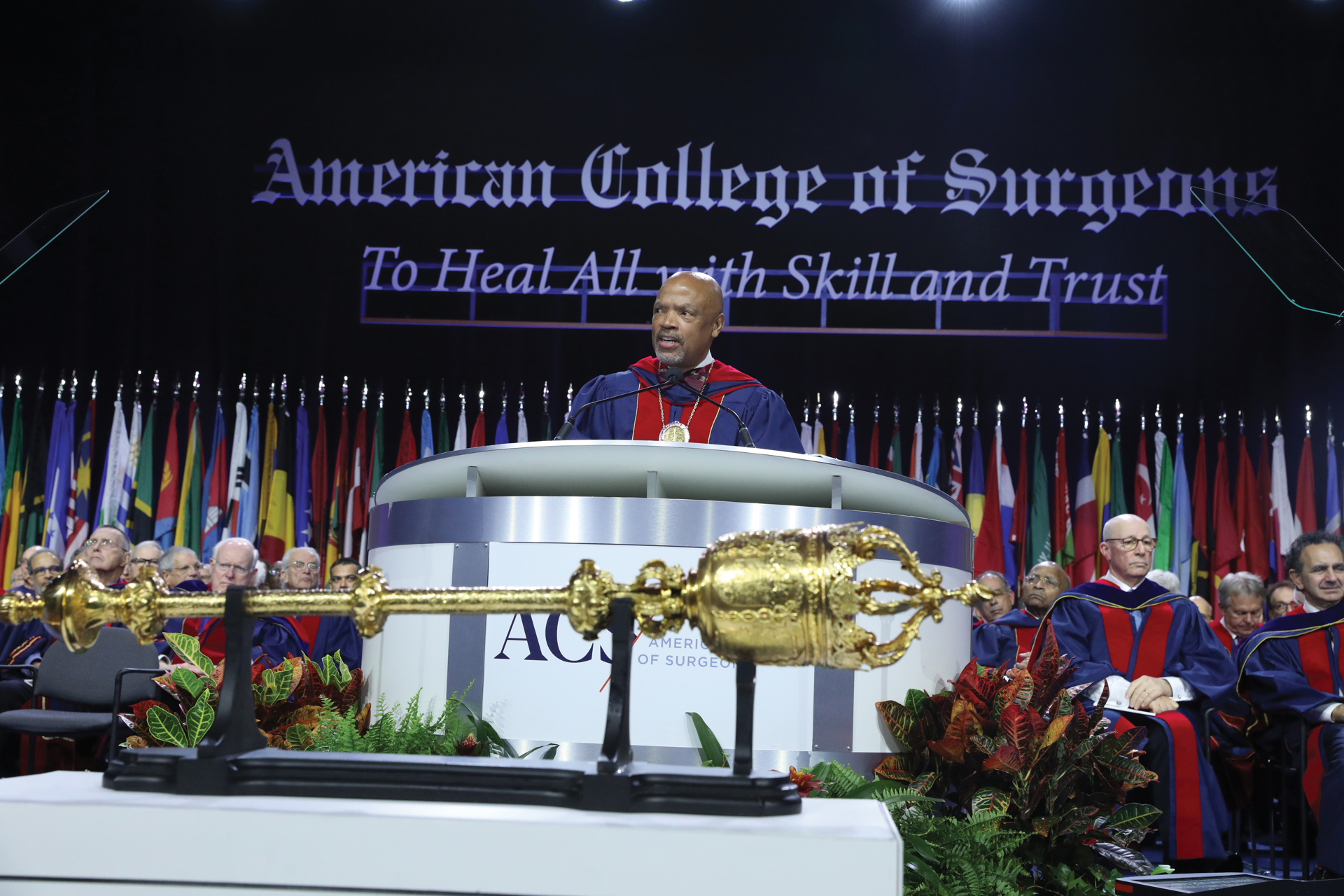The prevalence of diverticulitis continues to rise particularly in industrialized countries, with nearly 3 million Americans diagnosed with the condition and 200,000 hospitalized each year.1,2 Despite the expansive occurrence of this disease, standardized prevention and treatment continue to elude clinicians—although new recommendations for managing these patients are continually explored and debated.
“There is a lot of discussion and controversy around the management of diverticulitis and how it is treated in the US and what is being done in Europe,” said Alessandro Fichera, MD, FACS, FASCRS, division chief of colon and rectal surgery at Baylor University Medical Center in Dallas, Texas. “Both sides of the debate have important data to support what they are doing.”
Once considered a disease predominantly occurring in older patients, the incidence of diverticulitis continues to increase in all age groups, including patients in the third and fourth decades of life around the globe, leading surgeons to consider novel treatment approaches, including selective rather than routine use of antibiotics for uncomplicated cases or the use of laparoscopic surgery when advisable.
In fact, the recently updated guidelines issued by the American Society of Colon and Rectal Surgeons (ASCRS) highlight this changing treatment paradigm with recommendations related to antibiotic use and minimally invasive surgery and guidance for the initial evaluation of acute diverticulitis, such as key physical examination findings and the results of computed tomography scanning.3,4
Are Antibiotics Necessary?
The need to administer antibiotics during a case of uncomplicated diverticulitis has been the subject of clinical scrutiny for more than a decade.5
“The role of antibiotics is changing,” said Paula Denoya, MD, FACS, FASCRS, program director of the colorectal surgery residency program at Stony Brook Medicine in New York. “I’ve had a few patients tell me that their gastroenterologist has told them they don’t need antibiotics for every attack—but that’s pretty rare. I think most patients call their primary care doctor or the gastroenterologist or even their surgeon and get put on antibiotics. I battle with that myself.”
Based on available Level I evidence, less than 5% of patients fail nonantibiotic therapy and require oral antibiotics for the treatment of their mild diverticulitis, according to Marylise Boutros, MD, FACS, regional research director of the Digestive Disease and Surgery Institute at the Cleveland Clinic Florida in Weston.
“In my own experience with more than 60 patients in a nurse-led pathway for the management of mild diverticulitis with nonantibiotic therapy—the main reason for failure of nonantibiotic therapy was due to the patients being referred by their primary care physician or the emergency room with antibiotics already started,” said Dr. Boutros, who noted other factors that may influence the success of nonantibiotic therapy such as immunosuppression, other severe comorbidities, and underestimating the mild severity of diverticulitis.
A 2019 meta-analysis of nine randomized controlled trials published in American Family Physician revealed that patients with this specific disorder who were not treated with antibiotics had shorter hospital stays and showed no differences in complication or readmission rates.6
Another article published just last year in the Annals of Gastroenterology stated that “there have been several well-designed randomized controlled trials providing Level I evidence and informing numerous society recommendations on the omission of antibiotics in uncomplicated diverticulitis.”5 Specifically, the Antibiotics in Acute Uncomplicated Diverticulitis (AVOD) trial (published in 2012 and updated in 2019 for long-term follow-up) showed no differences in outcomes for patients treated with or without antibiotics.7,8 The Dutch Diverticular Disease Study group trial revealed “no significant differences were found at 6 months in days to recovery, recurrence, readmission rates or mortality, among other endpoints.”5
“The data from Europe are, I wouldn’t say very strong, but for some strong enough that several of my colleagues and friends in Europe are proponents of not using antibiotics in cases of uncomplicated diverticulitis,” said Dr. Fichera. “Anecdotally, from personal experience, I have not been particularly successful in managing diverticulitis without antibiotics. And the reasons could be multifactorial.” He added that the way the disease presents in the US may be different in a more homogeneous population such as Scandinavia and Northern Europe.
The authors of the Annals of Gastroenterology article note that the approach for treating uncomplicated diverticulitis without antibiotics has not gained “significant traction in American populations as it has in European populations” where many of these trials were originally evaluated.5
A 2018 joint survey of members of the Society of American Gastrointestinal and Endoscopic Surgeons and the European Association of Endoscopic Surgery “found that only 26% of them endorsed a trial of treatment without antibiotics, and half of them still would not practice this society recommendation.”5,9
“We clinicians do not like change. The onus falls on us to share this new evidence supporting the treatment of mild diverticulitis without antibiotics with our medical colleagues,” said Dr. Boutros. “Furthermore, one-third of patients presenting with diverticulitis have had a prior episode of the disease and are primed to expect an antibiotic prescription. It is our job and place to create physician and patient education tools on the subject and to disseminate them widely so that surgeons are equipped with materials to begin implementation in their hospital and communities.”
Changing Models in the Operative Management of Diverticulitis
Perhaps one of the most significant debates in the surgical management of diverticulitis centers around performing primary anastomosis in cases of acute diverticulitis versus the Hartmann procedure, which involves resection of the rectosigmoid colon with creation of a colostomy. Researchers suggest that resection with primary anastomosis is a viable alternative without increasing morbidity and mortality.5
“There have been a lot of data from the past 10 years supporting primary anastomosis, sometimes with diverting loop ileostomy, as opposed to doing a Hartmann procedure or an end colostomy,” Dr. Denoya said. “I think it really depends on the patient’s clinical picture at the time of surgery. How much peritonitis is there? Is it purulent peritonitis or feculent? In a purulent peritonitis patient who is hemodynamically okay during the operation, you can consider doing a primary anastomosis.”
The advantage to this approach is that the patient is more likely to get an ileostomy reversed.
“However, if I have a patient with diffuse peritonitis or hemodynamic instability, or other reasons why they’re very high risk for their anastomosis to fail, I still tend to do a Hartmann at that point. I think it’s the safer choice for these very sick people,” she said.
“There is a lot of talk about primary anastomosis for Hinchey III diverticulitis,” added Dr. Boutros. “However, in practice, I feel that there still are a lot of Hartmann procedures being performed. The Hartmann procedure remains the safe and most efficient option in the emergency setting. Unfortunately, Hartmann reversals are fraught with complications and many patients do not actually get a reversal.”
According to Dr. Fichera, based on the data from European trials, a hemodynamically stable patient without immunosuppression (or any other serious comorbidities) with Hinchey III diverticulitis can be treated with a primary anastomosis with or without proximal diversion rather than the one size fits all of a few decades ago.
“If we go back to the time I was in training, diverticulitis wasn’t as common as it is now,” Dr. Fichera said. “When you saw a patient with perforated diverticulitis and a Hinchey III presentation, or even IV, there was one operation, and that operation was a laparotomy with a sigmoid resection colostomy and a Hartmann pouch. Today, we need to keep in mind that there are patients who do well with a primary anastomosis.”
Another controversial area in the surgical management of diverticulitis is laparoscopic versus the more traditional open surgery, particularly for emergent cases.5 With minimally invasive surgery, the operation is conducted through small incisions and is generally linked to shorter hospital stays and fewer complications, as well as less pain for the patient.
“In the elective setting, I have usually optimized the patient and almost exclusively use a minimally invasive approach, as the patient outcomes are certainly superior and the operative conditions—although often challenging—include a hemodynamically normal patient able to tolerate a challenging surgery,” Dr. Boutros said. “These days, we offer elective surgery quite selectively such that patients have had multiple episodes of diverticulitis or have abscesses or fistulas, and though these are elective cases, the left lower quadrant is usually fibrotic or inflamed. In the emergency setting, the main priority is getting source control for the sepsis and doing an efficient operation, so that the patient can recover. Thus, though a minimally invasive approach is my preference, not every patient or clinical situation is suitable for this approach.”
Robotic surgery, which also is minimally invasive, provides an enhanced view of the surgical site and can assist the surgeon in terms of flexibility and precision.
“I think for the chronic patient with other complications like fistulas and abscesses the use of a minimally invasive approach makes a big difference,” Dr. Denoya said, adding that a comfort and skill level with minimally invasive techniques, whether laparoscopic or robotic surgery, is key as is working in a hospital with specialists available, such as urologists, to provide support when necessary.
Whatever approach the surgeon selects, the ASCRS clinical practice guidelines suggest individualizing the decision to operate.4
“Use your judgment and individualized treatment, rather than a one-size-fits-all thought process,” Dr. Fichera said. “If you have the right team, equipment, and skills for a patient who has not had multiple previous abdominal operations, then minimally invasive surgery is totally indicated and definitely has some demonstrated benefits.”
Dr. Denoya shared that when she started her surgical training, the dogma was to operate after two attacks of diverticulitis, but clinical practice has since “moved away from that” and involves much more patient-centered decision-making. “There is no clear-cut guideline that suggests after a certain number of attacks, you do surgery. But I do see in the community that there are still clinicians referring patients after one or two attacks telling them they need an operation,” she said.
It’s challenging to standardize surgical treatment for diverticulitis because there are so many different presentations of the disease—and what’s more, there’s been a notable increase among younger patients. In the US, one study indicated that acute diverticulitis admissions for patients aged 18 to 44 years increased by 82% from 1998 to 2005.10
“We went from early surgery for the younger patients with two or three attacks to being more conservative,” explained Dr. Fichera. “But if being conservative means multiple admissions to the hospital and an impact on quality of life and productivity for that patient, we need to balance that.”
He also said it’s important to consider the unique characteristics of the individual you are treating.
"We’re seeing patients in their 20s and 30s with bad disease—perforations, abscess, and the need to undergo resections,” Dr. Denoya added. “I think things are definitely changing as we’re seeing in other diseases, like colon cancer. The incidence of disease is happening in younger people, and we don’t know why.”
Genetics and the Gut Microbiome
Diverticulitis is linked to costs totaling more than $1.6 billion annually in hospitalizations and visits to the emergency room,3 a reality that is driving clinicians to uncover innovative approaches to treating this condition.
For example, recent research has identified genetic associations to diverticulitis, including some heritable factors uncovered in twin and genetic sequencing studies.5
“There is a lot of interest in genetic predisposition in these patients,” Dr. Fichera said. “In fact, the simple approach to familial predisposition has been done—and clearly there is a higher incidence of recurrent severe diverticulitis in relatives of patients who have had diverticulitis. But I’m not certain we know the reason behind that.”
According to Dr. Fichera, clinicians have learned from other diseases, like inflammatory bowel disease, that genetic predisposition typically goes hand in hand with the gut microbiome. “These two areas of study should be advancing together. Clearly, there will be a lot coming out of on these two aspects of diverticulitis in the future.”
Similar to the findings for other gastrointestinal diseases, alterations of the microbiome appear to be related to the occurrence of diverticulitis.9 Specifically, researchers have shown that changes in the microbiome can be identified when comparing segments of diseased and nondiseased tissue within the same individual, “although differentiating cause from effect is not feasible without longitudinal studies.”11
“If we have supporting evidence, it helps us educate patients as far as what they can do for themselves to change their diet or other risk factors,” Dr. Denoya said. “Certainly, there’s likely microbiome effects and dietary effects that are affecting people from a young age.”
Bridging the gap between research data and practice starts with staying informed on current research, said Dr. Fichera.
“Be aware of the data—and the data to me are pretty clear in showing that patient selection is key in everything we do, but especially for diverticulitis,” he said, adding that factors such as the age of the patient, if they are hemodynamically stable and if they are immunocompromised, are important considerations.
“You still need to use your judgment and engage in individualized treatment,” Dr. Fichera stated. “Know the literature and know the patient in front of you.”












